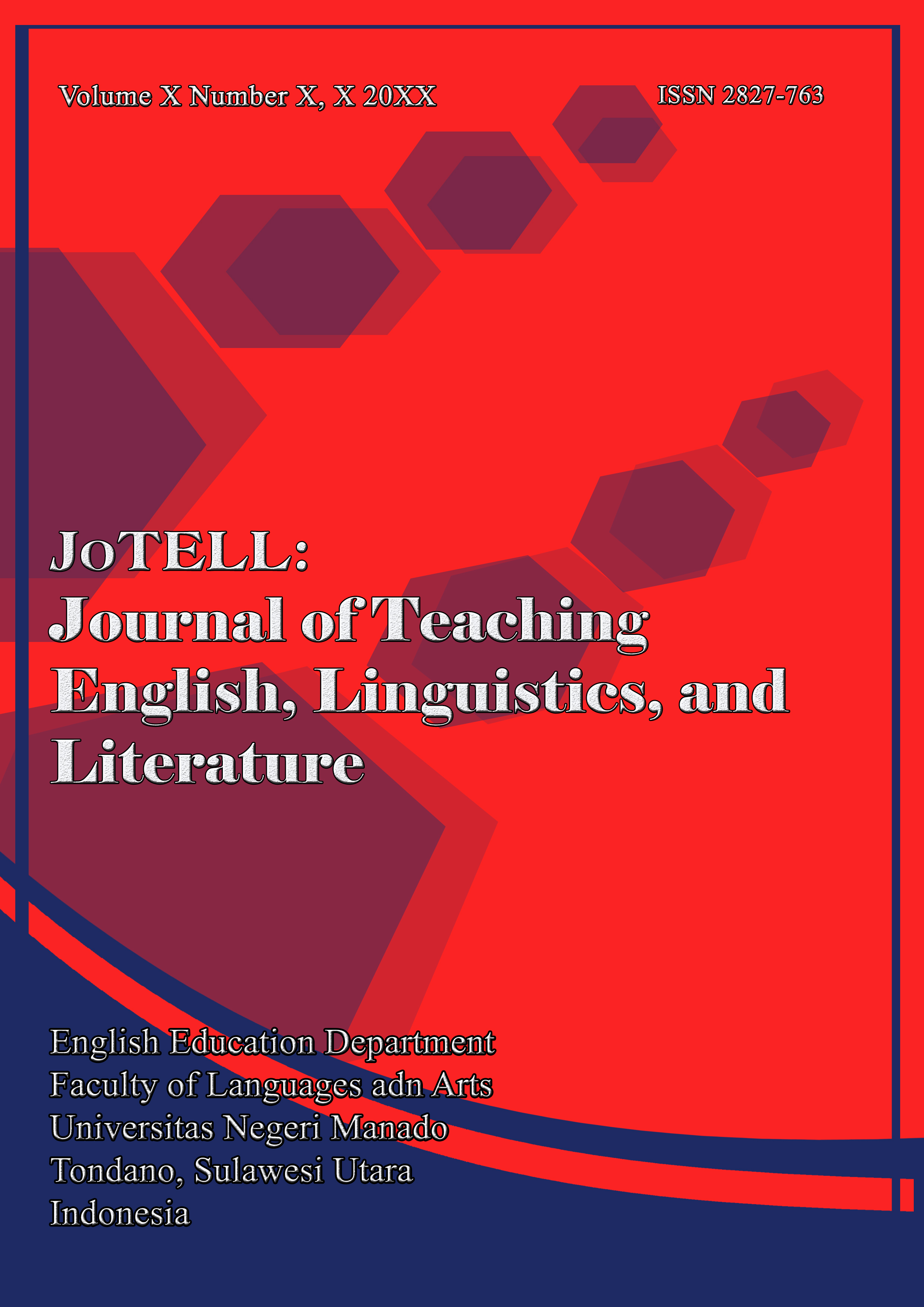AN ANALYSIS OF STUDENTS’ STRATEGIES IN OVERCOMING THEIR SPEAKING ANXIETY AT SMP NEGERI 5 KOTAMOBAGU
DOI:
https://doi.org/10.36582/jotell.v2i10.7659Keywords:
Speaking Anxiety, Causes, Students’ Strategies.Abstract
Speaking anxiety is a prevalent issue among students across different educational levels, and it can hinder their ability to communicate effectively in public. This research aimed to examine the underlying causes of speaking anxiety in students and explore the coping strategies they employ to address it. The study adopted a qualitative approach and involved 8th-grade students at SMP Negeri 5 Kotamobagu. Data collection was conducted through participant observation and in-depth interviews. The study's findings indicated that students' speaking anxiety primarily stems from two sources: firstly, internal factors related to their own self-perception, influenced by various factors like a lack of self-confidence, insufficient preparation and training, the fear of making mistakes, concerns about negative judgments from others, or inherent shyness. Secondly, external factors tied to classroom activities, including the pressure exerted by teachers to speak spontaneously or an unsupportive classroom environment. Students employ a range of strategies to cope with speaking anxiety, including triggering a relaxation response, thorough preparation and practice, adjusting their thought patterns and attitudes, envisioning successful outcomes, and incorporating physical movement. The study's results emphasize the crucial role of positive thinking and the support provided by parents, teachers, and peers in assisting students in overcoming speaking anxiety, thereby enhancing their self-assurance and level of readiness.
References
Ansari, M. S. (2015). Speaking anxiety in ESL/EFL classrooms: A holistic approach and practical study. International Journal of Educational Investigations, 2(4), 38-46.
Cowie, N. (2009). Observation. Qualitative research in applied linguistics: A practical introduction, 165-181.
Griffee, D. T. (2005). Research Tips: Interview Data Collection. Journal of Developmental Education, 28(3), 36-37.
Hampp, P. L. (2019). Use of Songs in Teaching Simple To be and Past Tense Teaching. Journal of English Language and Literature Teaching, 4(1), 15.
Liando, N. V. F. (2012). Factors Affecting a Successful Language Learner. Indonesian JELT, 8(1), 22–50
Liando, N. F. V & Lumettu, R. (2017). Students’ Narrative towards their speaking performance. International Education Studies, Vol. 10, Number 8, Pp. 21-28.
Punch, K. (2009) Introduction to Research Methods in Education. Los Angeles et al.: Sage.
Siagian, U. M., & Adam, A. (2017). An Analysis of Students’ Anxiety in Speaking. ANGLO-SAXON: Journal of the English Language Education Study Program, 8(1), 03-09.
Queiros, A., Faria, D., & Almeida, F. (2017). Strenght and limitations of qualitative and quantitatve research methods. European Journal and Educational Studies, 3(9),369-387.
Downloads
Published
How to Cite
Issue
Section
License
Copyright (c) 2023 JoTELL : Journal of Teaching English, Linguistics, and Literature

This work is licensed under a Creative Commons Attribution-ShareAlike 4.0 International License.












